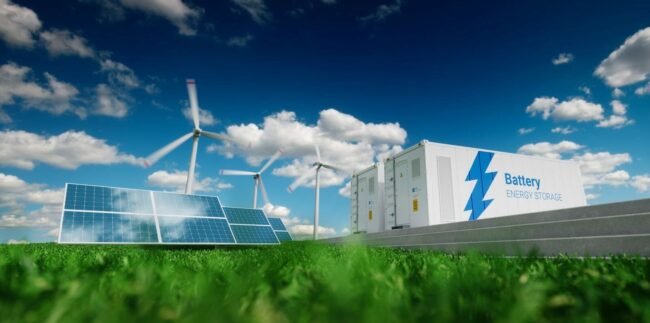As the world accelerates its transition to renewable energy, the importance of efficient and scalable energy storage solutions has never been greater. Energy storage is crucial for balancing supply and demand, ensuring grid stability, and enabling the widespread adoption of intermittent renewable energy sources like solar and wind. This article delves into the latest advancements in energy storage technologies and their pivotal role in shaping a sustainable energy future.
The Need for Energy Storage Solutions
Renewable energy sources, such as solar and wind, are inherently variable, producing electricity only when the sun shines or the wind blows. This intermittency presents a significant challenge for maintaining a reliable and consistent power supply. Energy storage solutions bridge this gap by storing excess energy generated during periods of high production and releasing it when demand exceeds supply. This capability is essential for achieving a balanced and resilient energy grid, reducing reliance on fossil fuels, and advancing toward a carbon-neutral future.
Lithium-Ion Batteries: The Powerhouse of Energy Storage
Lithium-ion batteries have emerged as the dominant technology in energy storage, powering everything from smartphones to electric vehicles and grid-scale storage systems. Their widespread use is driven by their high energy density, long cycle life, and declining costs. Recent innovations have focused on improving the performance, safety, and sustainability of lithium-ion batteries.
Solid-state batteries represent a significant leap forward in this technology. By replacing the liquid electrolyte with a solid material, these batteries offer higher energy density, faster charging times, and enhanced safety. Solid-state batteries are poised to revolutionize energy storage, particularly in the automotive and portable electronics sectors, by providing longer-lasting and more reliable power.
Flow Batteries: A Scalable Solution for Grid Storage
Flow batteries offer a promising alternative to lithium-ion batteries for large-scale energy storage applications. Unlike conventional batteries, flow batteries store energy in liquid electrolytes contained in external tanks, allowing for easy scalability by simply increasing the size of the tanks. This makes flow batteries ideal for grid-scale storage, where large amounts of energy need to be stored and discharged over extended periods.
Vanadium redox flow batteries (VRFBs) are among the most advanced flow battery technologies. They offer long cycle life, high efficiency, and the ability to discharge 100% of their stored energy without degradation. These characteristics make VRFBs particularly suitable for stabilizing the grid, integrating renewable energy sources, and providing backup power during outages.
Compressed Air Energy Storage (CAES): Harnessing Air Power
Compressed Air Energy Storage (CAES) is a proven and reliable technology that stores energy by compressing air into underground caverns or tanks. When electricity is needed, the compressed air is released and heated to drive a turbine, generating power. CAES systems can store large amounts of energy for extended periods, making them well-suited for balancing supply and demand on the grid.
Recent advancements in adiabatic CAES aim to improve the efficiency of this technology by capturing and reusing the heat generated during air compression. This innovation reduces the need for additional fuel and enhances the overall energy efficiency of CAES systems, making them a more sustainable and cost-effective option for large-scale energy storage.
Pumped Hydro Storage: The Backbone of Grid Stability
Pumped hydro storage is the most established and widely used form of energy storage globally. It works by pumping water from a lower reservoir to a higher one during periods of low electricity demand. When demand increases, the stored water is released back through turbines to generate electricity. Pumped hydro storage offers high efficiency, long service life, and large-scale energy storage capacity.
New developments in closed-loop pumped hydro systems are expanding the potential of this technology. Unlike traditional pumped hydro, which relies on natural bodies of water, closed-loop systems use artificial reservoirs, allowing for greater flexibility in site selection and reducing environmental impacts. These innovations are paving the way for increased deployment of pumped hydro storage in regions with limited natural water resources.
Thermal Energy Storage: Capturing and Releasing Heat
Thermal energy storage (TES) is an innovative approach that stores energy in the form of heat or cold, which can later be converted back into electricity or used directly for heating and cooling. TES systems are highly versatile and can be integrated with various renewable energy sources, such as concentrating solar power (CSP) plants, to store excess heat generated during the day and release it at night.
One of the most promising TES technologies is molten salt storage, used in conjunction with CSP plants. Molten salt can store thermal energy at high temperatures for extended periods, allowing CSP plants to generate electricity even after sunset. This capability significantly enhances the reliability and dispatchability of solar power, making it a more viable option for baseload energy generation.


COMMENTS